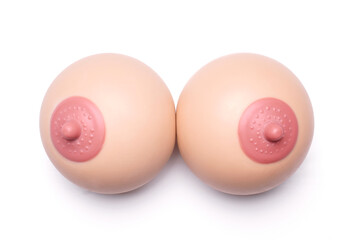
Causes of common nipple problems
This is a fairly common set of problems to be found especially in women and they are often associated with swelling, discharge, pain, change in colour, and itching. These problems in the nipples can lead to discomfort and affect anyone. They can lead to significant amounts of discomfort from time to time. But most of the causes are not serious and can easily be treated. In other cases, however, such occurrences would indicate the presence of some underlying health conditions. Some of the more common symptoms of these lesions are as follows:
1) Swelling and pain in the nipples
2) Nipples that change their shape due to such swelling
3) Nipples that are cracked or bleeding
4) Nipples that are irritated or itchy
5) Nipple discharge which may be clear, milky, yellow, green, straw, brown, or almost black
6) Changes around the area surrounding the nipples such as the formation of dimples or puckering of the skin.
7) Soreness is often due to any combination of the above
The causes of these common nipple problems include excessive rubbing during exercises such as running or sexual activity. That can also result from underactive thyroid disease and pituitary gland tumour, which is often harmless. Therefore, the causes of these conditions are wide and varied. It is important to take a detailed examination of these conditions when they occur and especially, to do so if the lesions persist.
Many nipple problems have nothing to do with breast cancer. Many of these problems can occur in both men and women. They are not to be dismissed with a wave of the hand, however, and all such cases should be taken to a doctor for a proper examination. Often, in women who are in their monthly cycle, fluctuations in their hormone levels could have implications for certain changes in the physical condition of the breast, which could last for just a few days and resolve. If this is found to be bothersome, it is important to seek an audience with your doctor. However, the common causes of these conditions, other than those already named above, are as follows:
1) Pregnancy
2) An injury to the breast tissue
3) Infections
4) Small, benign, or non-cancerous tumours
5) Ectasia, which is the widening of the milk ducts
6) Paget’s disease of the breast
7) A severe blow to the breast can cause nipple discharge
8) Unusual external pressure on the chest can also be responsible for nipple discharge.
Newborn babies sometimes experience the discharge of a clear fluid from their nipples. In some instances, the discharge is milky and it is caused by the baby’s absorption of hormones from the mother in the final stages of pregnancy as she prepares to adapt to breastfeed her oncoming baby. Another name for such discharge in babies is “witch’s milk” which should cease after a few days. It is not considered a dangerous situation by doctors. For the sake of clarity, breastfeeding mothers are excluded from this essay to avoid undue anxiety among them.
These problems are often diagnosed after a doctor has performed a physical examination of the affected breast. For good measure, it is important to also examine the other breast for the purpose of comparison. They will also ask you about any medications you might be taking as well as certain changes you might have made to your diet. They will also ask about any recent exercise that could have caused some irritation to your nipples and finally, it is important to determine if the woman in question is pregnant. In a man, of course, this last aspect is not relevant. If your doctor thinks you have Paget’s disease, which is a rare form of breast cancer, they will ask to perform a skin biopsy to confirm this. This will involve removing a tiny bit of skin from the breast in order to conduct the examination. Before this is done, important blood investigations are conducted to determine the level of fitness of the person and to conduct thyroid function tests, as well as prolactin level analysis. Following these, a ductography may be requested, which involves the injection of a contrast medium into the affected breast to see how many of the ducts are involved in the problem by conducting follow-up X-rays. In addition, a mammogram of the breasts may be ordered in order to obtain more information.
A CT scan of the breast is also necessary especially if the diagnosis remains uncertain prior to having a skin biopsy taken. So also is an MRI scan. However, these latter investigations are seldom necessary for a diagnosis to be made. Usually, after physical examination and blood tests are done, a ductography may be performed to determine how many ducts are involved, and that is often followed by a skin biopsy, which returns a conclusive diagnosis in most instances. This paves the way for the necessary treatment to be delivered. If the cause is an infection, the appropriate antibiotic is prescribed. If it is due to a fungal infection, an antifungal medicine is prescribed, which is often a cream that is applied to the area involved. Sometimes, it may be useful to include an antifungal agent that can be taken by mouth, depending on the type of fungus involved. If it is due to low thyroid function, it is important to determine how low the hormone levels are and to treat them accordingly using a replacement medication. If a pituitary tumour is the cause, it can often be left alone because of its location in the brain. However, if it grows large enough to disturb the nerves that lead to the eyes, thereby causing vision problems, an operation will become necessary to remove the growth.
When the cause of the nipple problem is a small, non-cancerous tumour, there is often no need to remove it right away. It can be monitored at intervals to determine if it is increasing in size. Therefore, regular check-ups can be scheduled by your doctor to monitor its growth. In the case of ectasia, it usually should resolve by itself. If that fails, however, your doctor can choose to have the affected ducts removed surgically. Another small, non-cancerous growth that can affect a nipple is called intraductal papilloma. This is a wart-like lump that grows within the milk duct and is usually close to the nipple. It may cause blood or some other sticky fluid to flow from the nipple. One relatively common problem that may affect up to a quarter of all women is known as galactorrhoea. It is not related to pregnancy or breastfeeding, and maybe a response to an increase in prolactin, the hormone that stimulates the production of milk. Other causes of this anomaly include the use of antidepressant medications, certain blood pressure drugs and rising oestrogen levels.
On the whole, nipple problems can be prevented by wearing appropriate clothing when exercising. Women should wear well-fitting sports bras that do not chaff the skin especially when jogging or horse-riding or cycling. Men who perform similar exercises should wear comfortable underclothes preferably made of cotton.
Questions and answers
Dear doctor, my 12-year-old daughter has been complaining of pain in her navel. I have taken her to a hospital, and they gave her drugs for an ulcer (Gestid) but there is still no improvement. Please, what is your advice, sir? 08023****
It is not likely that such pain is due to an ulcer. Rather, it is better to focus physical examination around the area of the navel. It is entirely possible that she has a hernia there. It is better that you take her to see a paediatrician, who would examine her and recommend what the next step should be. If a defect is found in or around the navel, she will be referred to a paediatric surgeon for the needed attention.
Dear doctor, I woke up from sleep about two weeks ago to find that my right ring and small fingers were numb. I thought it was the awkward position I slept in after taking some red wine, so I kept on massaging the area around the elbow to get some relief. Three days later, there was no improvement and I decided to go to the hospital where they checked me and I was told there was no problem with me. They prescribed some medicines for me, including Meloxicam and Vitamin B-complex. After three days, there was no improvement, and I was now drinking water like a camel, so I went to a nearby laboratory in my area where my blood sugar was found to be 386mg/dl. I have seen a doctor since then who advised me to lose some weight because I currently weigh 106kg. He also placed me on Metformin and Glymepiride. The drugs make me weak, but the numbness has improved very much and my blood sugar today is 112mg/dl. Does it mean I now have diabetes? 08023*****
Yes, you do from all indications. However, rapid weight loss in the early stage of the disease coupled with exercise and appropriate use of the medications you have been given would help you greatly and allow you to stabilise enough to significantly reduce the dose of the drugs you are using now. If the dose reduces, your level of tiredness should be less than before. The greatest benefit you have derived from the kind of discomfort you suffered in your right arm is the push you got to diligently seek answers to your problem; that has probably saved your life.
Dear doctor, I am an 88-year-old University of Ibadan pensioner apprec





